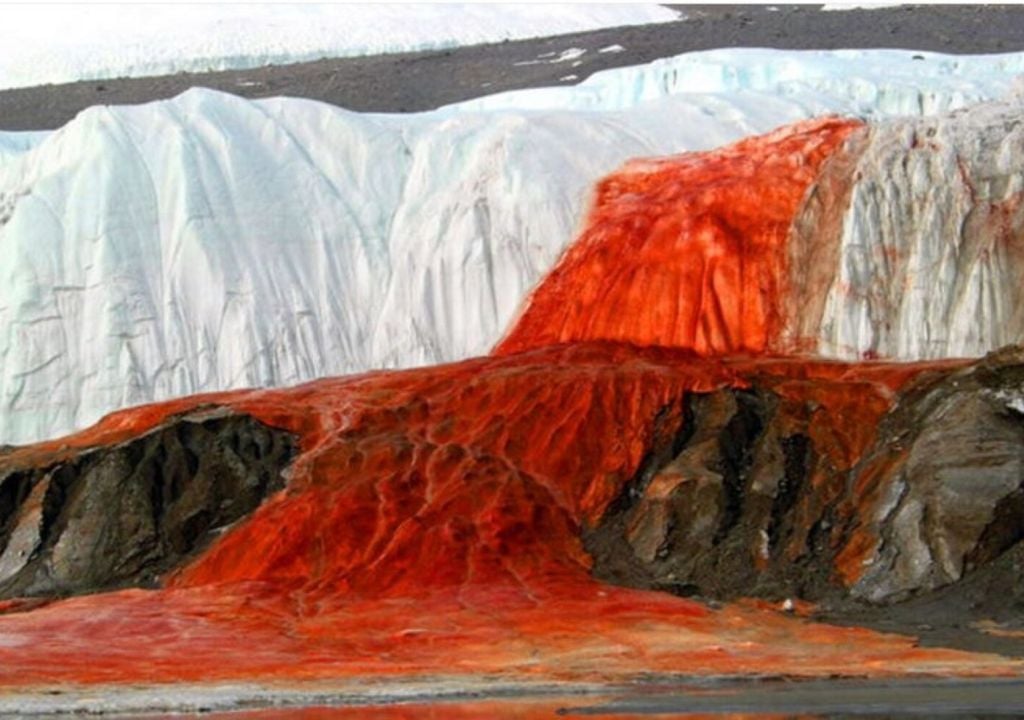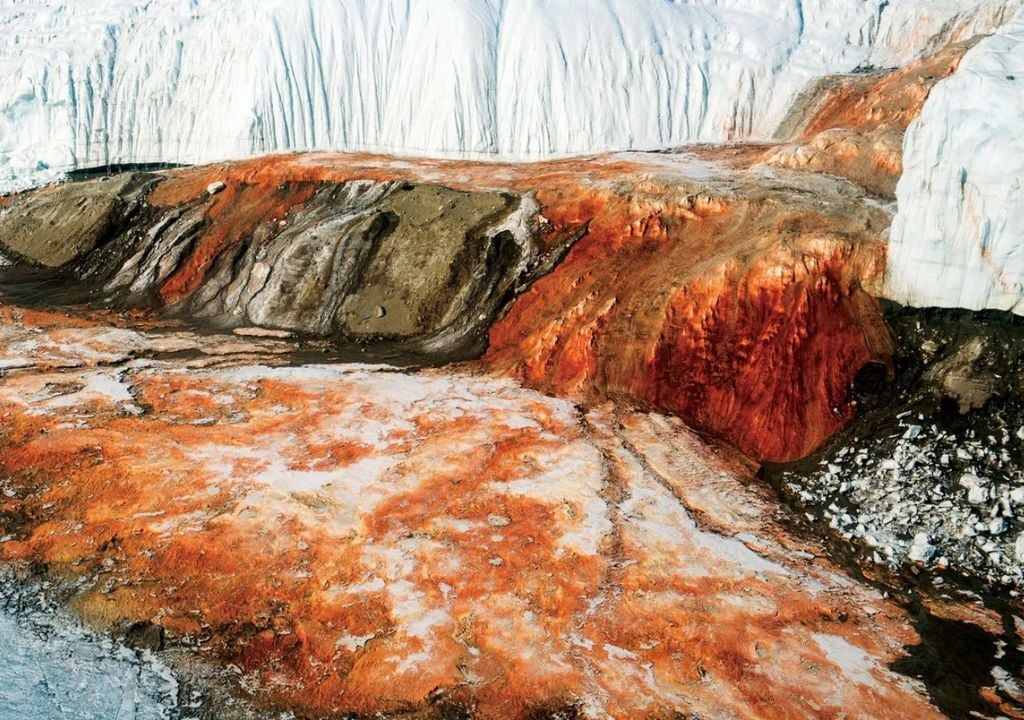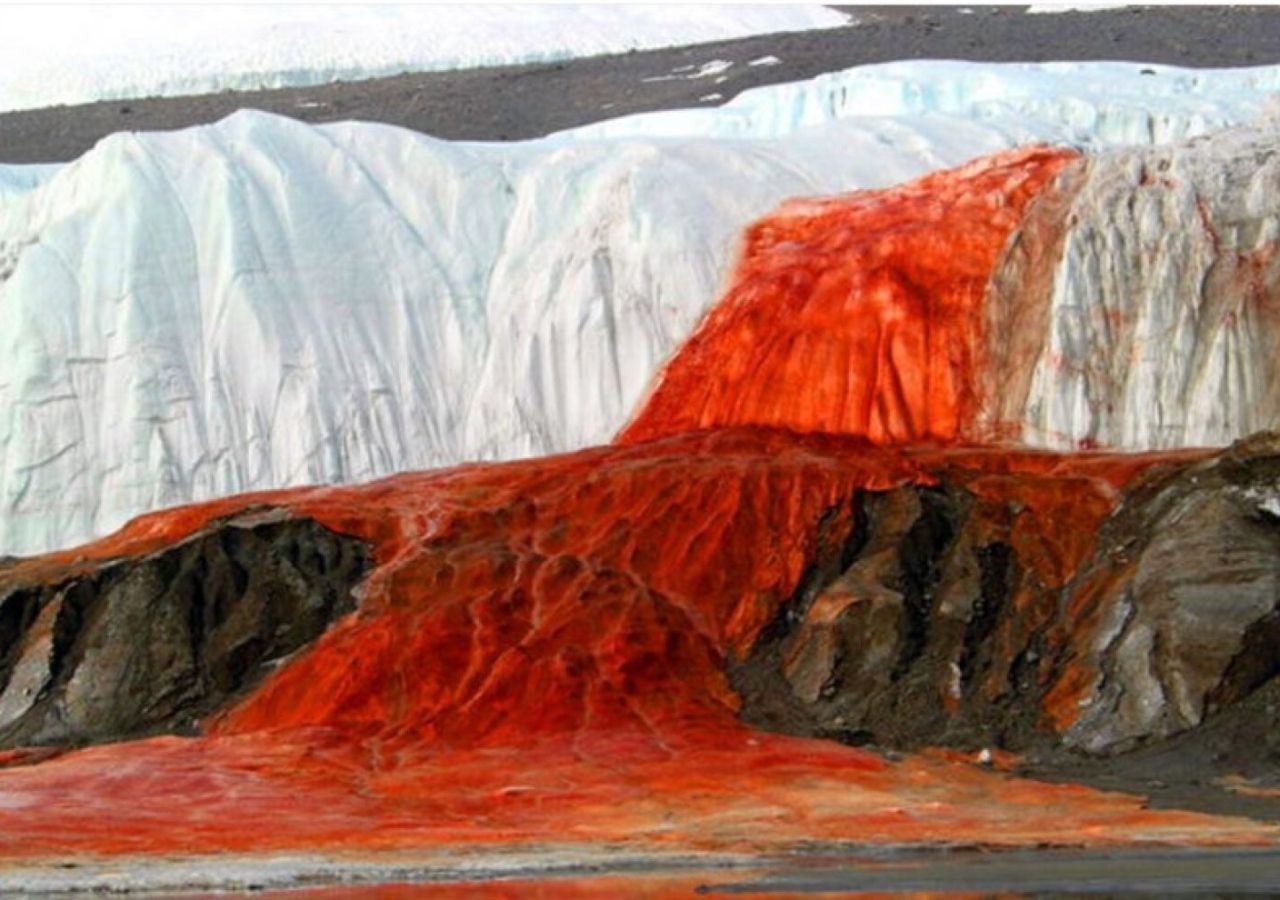
Antarctica’s Boundless, Desolate Whiteness Holds a Secret This has always aroused the curiosity of the scientific community: “Blood Falls”is a crimson tributary that flows over the 54 km long Taylor Glacier and into Lake Bonney in the McMurdo Dry Valley.
eye-catching phenomenon Discovered in 1911 British geographer Thomas Griffiths, during Robert Scott’s Terra Nova expedition. Griffith named the place, which later became known as Blood Falls.
The origin of the crimson hue is has puzzled scientists for over a hundred years. The hypothesis that best explains this phenomenon is the presence of reddish algae that transfer their color to the spring water.

But as time went on and observational methods improved, they began to appear A new explanation for this phenomenon. In 2017, the algae hypothesis was thrown out Scientific studies have shown that the cause of this color may be a mineral.
Recently, Ken Livi, a materials science and engineering scientist at Whiting College, used transmission electron microscope -Amplification power up to 1 million times- Check the water sample.
Not only did he discover the origin of the red hue, but he also revealed the phenomenon beneath the glacier exist A natural laboratory frozen in time This is a treasure trove of scientific research.
Subsurface microenvironment frozen in time
the red water run down the ice wall from buried bodies of water – Literally – a huge glacier, not less than 400 meters deep and about 4 million years old. Trapped under the ice, cut off from the atmosphere—neither air nor light— This lake has unique features.
Due to long-term isolation, It has a very high salt concentration, close to 14%, which makes its waters four times saltier than seawater and turn it into brine. This salinity helps it maintain its temperature and not freeze like the rest of the environment.
there is a unique place inside #Antarctica The water there is dyed red. The origins of those phenomena known as “blood falls” have been widely speculated, join us in this post as we tell you about its origins. pic.twitter.com/Dn8E7WtYdC
— IGEO (CSIC-UCM) (@IGeociencias) August 29, 2023
But there’s more.Levy found in salt water with a microscope Tiny iron nuggets or nanospheresonly one-hundredth the size of a red blood cell.
“When I looked at the microscope images, I noticed that there were these little nanospheres, and they were rich in iron, and besides iron, they contained many different elements (silicon, calcium, aluminum, sodium), and they were all different. Same,” Livi told the magazine. center.
Exposure to oxygen, light and higher temperatures that exist in other bodies of water when glaciers break up and water can move within subterranean fracture systems Causes iron to oxidize and stains the fluid red. Thus, it produced the “blood” mantle for which this corner of Antarctica is famous.
scientists say nanosphere They were previously unrecognizable, not only because of their small size, but because researchers believe a certain mineral is responsible for the reddish tinge, and the real culprit is, Nanospheres are not minerals.

“To be a mineral, the atoms must be arranged in very specific crystal structures. These Nanospheres are not crystals So the above method for checking solid they didn’t find themLevi said.
Salt and iron-rich waters beneath glaciers have an active microbiome, has been isolated there for about 2 million years. Through the metabolism of sulfate, they are able to obtain energy.
To understand the ancient mysteries of Blood Falls, Need to Know Antarctic Microbiology. “Under the salty waters of Antarctic glaciers, microbes may have existed for millions of years. These are ancient waters,” said Levy, who believes the mystery of Blood Falls has finally been solved.
This is a microenvironment stuck in time, Great potential in different scientific fields. In fact, the researchers believe that understanding this unique environment and its life forms could aid in the search for life on other equally hostile planets, such as Mars.

